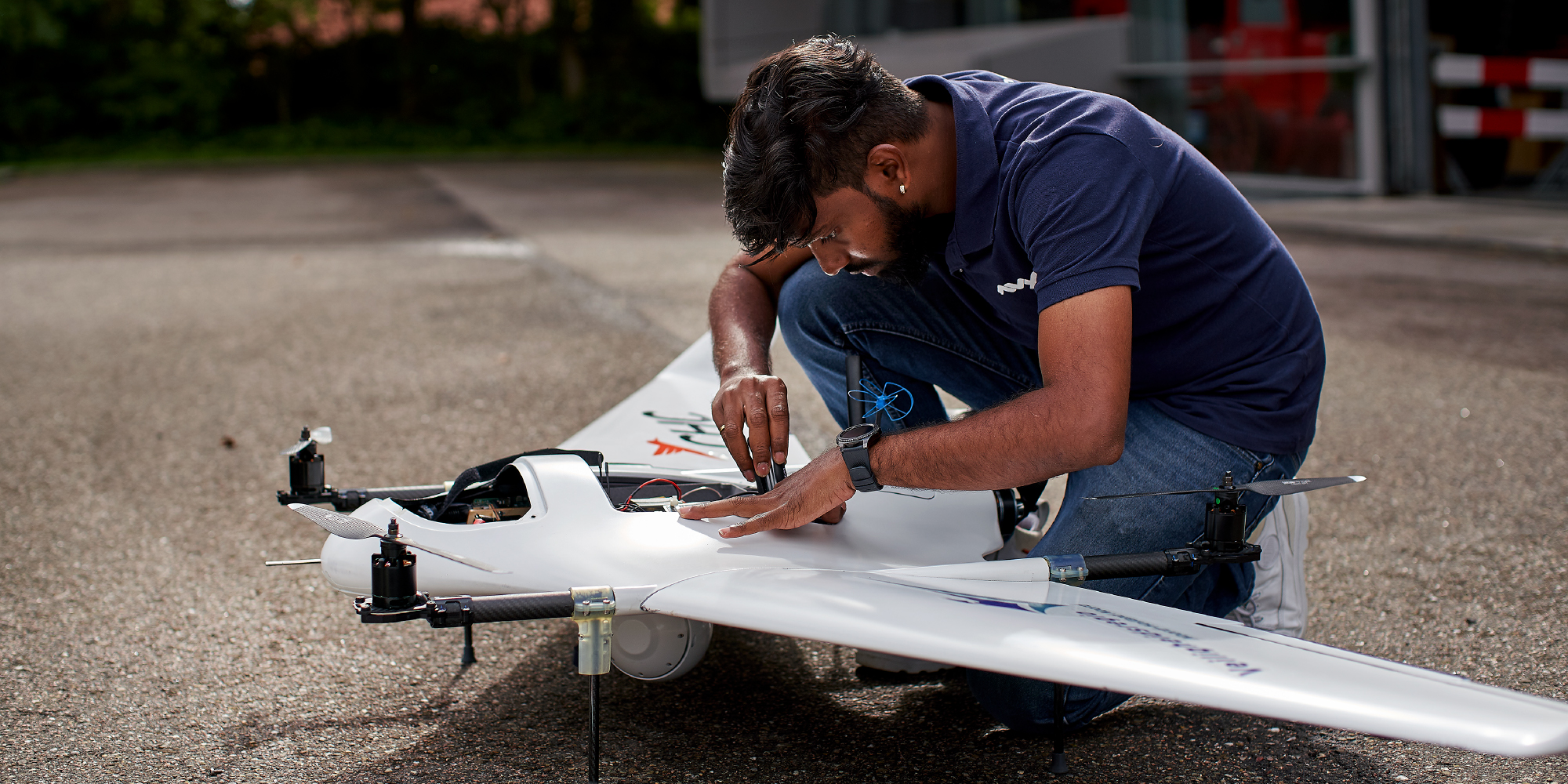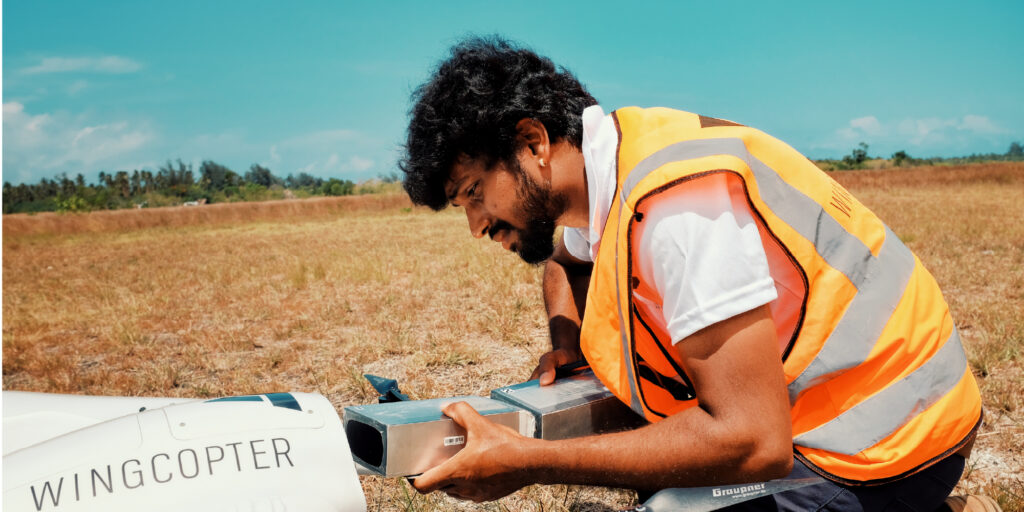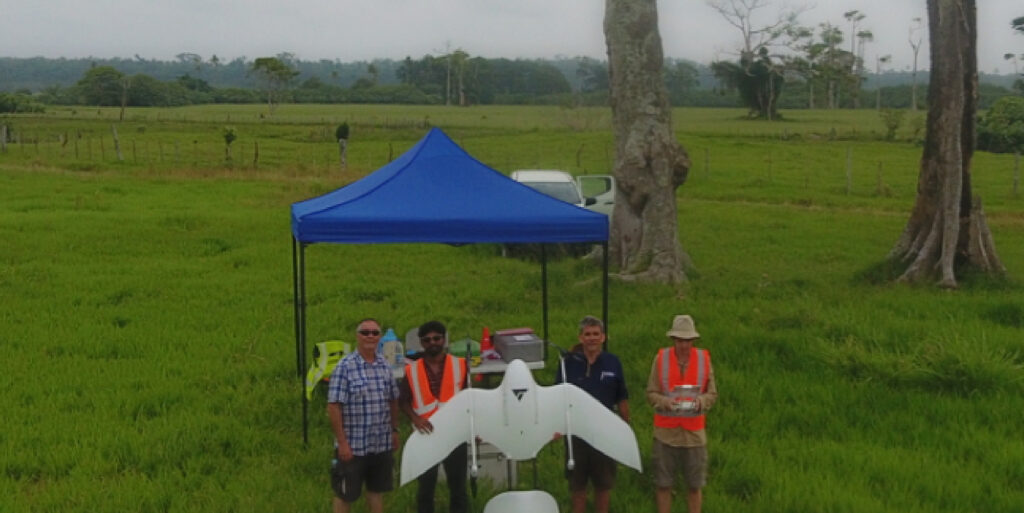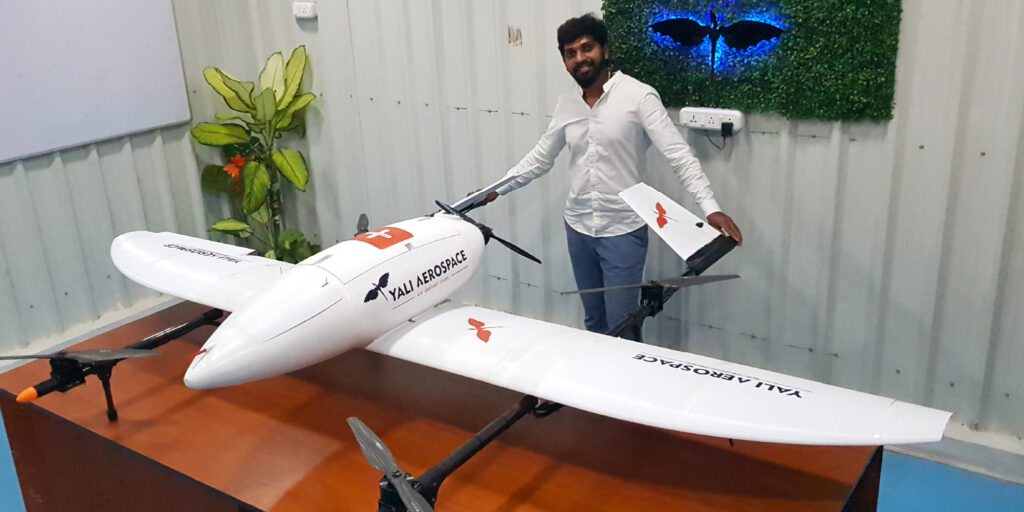Taking Health to the Sky : Delivering Medicines with Drones

In a life marked by incredible highs and lows, none were quite as dramatic as those experienced by Dinesh Baluraj. Here is his story behind his ambitious goal in transforming India’s healthcare with his aerospace engineering knowledge in drones.
At the tender age of 10, Dinesh Baluraj experienced a life-changing moment when he attended his uncle’s housewarming party in a remote village. Not only did it sear an indelible impression on Dinesh in his formative years, but it also changed his entire outlook and goal in life.
“It came all of a sudden when I heard a cry. It was not the usual sound of quiet sobs but anguish and devastation,” Dinesh recounted.
He discovered that his uncle’s neighbour had lost not one but two children in a single night.
“I could still remember; she was carrying her child’s dead body home as the doctors at the primary healthcare centre could not save her child in time from a snake bite. And when she returned from the hospital, carrying the body of her dead child in her arms, only to realise that her other surviving child had also died from a similar bite from the same snake. In a single day, she lost her only two children,” Dinesh recalled painfully.
“The tragedy would not have happened if he had been treated with antivenom in time. The problem is not the lack of doctors or medical supplies but the lack of means to obtain such life-saving medicines fast enough,” said Dinesh.

To this day, the memory of the mother crying over her lost children and the helplessness he felt when he could not do anything continued to reverberate profoundly in Dinesh.
Growing up, Dinesh has never forgotten this painful episode and has been working towards improving healthcare accessibility in India. After attaining his bachelor’s degree in aerospace engineering at Anna University, he began to search for various learning opportunities and where they could take him.
“I started applying for master’s programmes in Singapore, the United Kingdom, and Canada. Eventually, I chose to study at TUM Asia because of how well-structured the course curriculum is. It covers 15 subjects in three semesters; I could learn not one but three aspects of aerospace engineering – flight control systems, propulsion and structures and materials,” Dinesh shared.
The effect of his choice could hardly have been more profound. The fruit of his years of labour, Yali Aerospace, is set to transform how healthcare can be accessed, especially in rural countries.
Crucial to keep in touch with the rhythms of the latest technologies and innovations, Dinesh searched for aerospace-related careers that could take him just about anywhere. Since graduating from TUM Asia, he has interned at Rolls-Royce. His career has since taken flight where his continuous dive into the aerospace arena soared him squarely to where his dreams are – Gilmour Space Technologies.
Naturally, the research of the new and unheard of has always been one solitary journey and is almost always fraught with uncertainties and fear. The risk of failure is very real. For Dinesh, he was unfazed by what laid ahead, as it was simply a checklist of things that needed to be overcome to reach his goal. True enough, he quickly found his bearing even in unknown terrains.
“I was grateful towards TUM Asia as I had the opportunity to dabble in the full scope of scientific research and appreciate the magnitude of what is to come my way. After my internship at Rolls-Royce, I came across a career opportunity at Gilmour Space Technologies developing prototypes on aerial exfiltration aircraft to carry a wounded soldier. Dinesh had tried everything from designing, manufacturing drones to flight operations, working in various capacities in different parts of the world, from one place to another. At this point, vertical take-off and landing (VTOL) fixed-wing, which was still in its nascent phase, where the technology was very new. We were among the first to establish a system that operates two flight control systems in one aircraft. It was not easy, but my time at TUM Asia has prepared me for precisely such a path,” said Dinesh.

Dinesh had tried everything from designing, manufacturing drones to flight operations, working in various capacities in different parts of the world.
Despite enjoying an illustrious career journey with his diverse skill set, Dinesh decided it was time to return to India, where his dream began.
“My parents would have preferred me to continue my career abroad, but they could see how important it is for me to do what I was meant to do. So, we relocated and settled back in my hometown, Thanjavur,” explained Dinesh.
Yali Aerospace

Struck by a personal episode of watching helplessly a mother grieving from the accidental deaths of her children, he devoted all his energies to improving the accessibility of healthcare in the backwaters of India. He founded Yali Aerospace, delivering drone solutions for medical, surveillance and logistics to save lives throughout the world.
Few dared to pull the curtain to uncover and tackle the contrasting healthcare landscape in India. With a population of more than 1.4 billion people1, the healthcare system in India is surprisingly disparate. There is a government-funded, three-tiered public health system – Sub Health Centre (Urban and Rural), Primary Health Centre (Urban and Rural) and Community Health Centre (Urban and Rural) that provides preventive and curative health service2.
According to a Lancet study in 2018, India ranked 145th among 195 countries in terms of quality and accessibility of healthcare3. Under the National Health Mission (NHM), Primary Health Centres (PHC) are established to cover a population of 30,000 in rural areas and 20,000 in hilly, tribal and desert areas. In 2019, there were a total of 24,885 rural PHCs and 5,190 urban PHCs in the country4.
Over the years, India has seen improvements in its accessibility and quality of healthcare, but the modern overlay is still anchored by old-fashioned ways of working. Delivering affordable and accessible healthcare services, medicines, and diagnostics has been challenging.
“For one PHC to cover a population of 30,000 in rural areas is a mammoth task. Further impeding the situation is how inaccessible these rural areas are without access to public commutes. Most residents resort to walking for hours just to see a doctor,” shared Dinesh.
“Healthcare should not be a luxury. Nothing should stand in the way of saving a person’s life,” Dinesh continued.
Dinesh endeavours to change that.
Dinesh said, “in many rural areas in India, where citizens rely on primary health centres for primary care, healthcare provision is hampered by frequent stockouts of essential medicines and critical medical supplies. Also in many villages, the provision of medical care is often reliant on poor road conditions and unreliable road networks. These challenges contribute to high rates of snake bite mortality, maternal deaths, and lack of blood transfusions, reduce patients’ ability to adhere to treatment, and slow improvements to the health system. I therefore came up with the concept of ‘’Yali Network Bridge’’. Yali Network Bridge is a drone delivery platform and it works by implementing our drone (named Yali) and the drone landing station (named SkyBase) at all of the main government hospitals in India where our Yali could store, take off, land, change batteries, and switch payload easily. Our plan is to situate our SkyBase at every 100 km radius, connecting all the primary health, community health and sub centres together with the main government hospitals in India. With our technology, we can even transport the emergency medical supplies including organs to longer distances like Chennai to Kanyakumari (750km) within four hours.”
“To me, every delivery matters, and even a single drop of blood could potentially save a person’s life. This is my motivation in establishing the Yali Aerospace and the Yali Network Bridge,” said Dinesh.
1 https://www.worldometers.info/world-population/india-population/
2 https://pib.gov.in/Pressreleaseshare.aspx?PRID=1848808
3 https://timesofindia.indiatimes.com/india/india-145th-among-195-countries-in-healthcare-access-quality-lancet/articleshow/64283179.cms
4 https://pib.gov.in/PressReleasePage.aspx?PRID=1656190#:~:text=Under%20the%20National%20Health%20Mission,hilly%2C%20tribal%20and%20desert%20areas.





